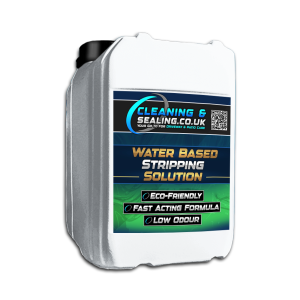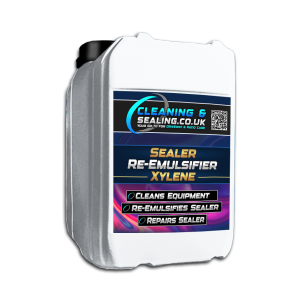Failed Sealer - Limestone/ Travertine
Removing Failed or Wrong Sealer from Limestone and Travertine Surfaces
Removing a bad or wrong sealer from limestone or travertine takes time and care. These stones are delicate and need gentle handling. Without the right tools or experience, you can cause lasting damage. If you feel unsure, now is a good time to hire a professional applicator for safe and reliable results.
Sealing limestone and travertine protects them from moisture, stains, and weather. It also improves their natural look. But using the wrong sealer or applying it badly can cause flaking, streaking, blooming, or uneven colour. These issues hurt the stone’s look and weaken its strength over time.
Good news: you can remove failed sealers safely with the right products and method. This restores the stone’s beauty and prepares it for proper resealing.
Why Sealers Fail on Limestone and Travertine
Both stones are porous and rich in calcium. They need specific sealers that soak in well. Sealers fail because of:
- Wrong Sealer – Surface coatings or shiny sealers don’t soak in and can trap moisture or peel off.
- Bad Weather – Sealing in cold, damp, or humid weather traps moisture and causes cloudy or white spots.
- Too Much Sealer – Applying thick or many coats too fast leads to sticky, patchy, or uneven surfaces.
- Poor Cleaning – Dirt or residue left before sealing stops the sealer from sticking evenly, causing blotches or flaking.
How to Remove Failed Sealer from Limestone or Travertine
Remove the old sealer fully before adding a new one. This helps the new sealer stick and protects your stone for longer.
Use a stone-safe, professional sealer remover because limestone and travertine react badly to harsh chemicals. The right remover will:
✔ Break down the old sealer without harming the stone’s surface.
✔ Lift flaking, discoloured, or blooming layers safely.
✔ Prepare the stone for a smooth, clean resealing.
Avoid paint strippers or acidic cleaners. They can harm or discolour natural stone permanently.
Best Steps After Sealer Removal
After you remove the old sealer:
✅ Let the stone dry fully to avoid trapped moisture causing new problems.
✅ Pick a breathable sealer made for limestone or travertine.
✅ Apply in dry, mild weather—no rain, strong sun, or high humidity.
✅ Use thin, even coats. Don’t soak the surface to avoid patchiness.
Why Use a Specialist Sealer Remover?
Limestone and travertine are sensitive to harsh products. Normal removers may:
❌ Etch or dull the stone, ruining its natural look.
❌ Leave residues that stop new sealers from sticking well.
❌ Cause colour changes, especially on lighter stones.
Specialist removers made for natural stone will:
✔ Remove sealer fully and safely without harming the stone.
✔ Leave no residue so resealing works well.
✔ Work quickly to restore the stone’s clean, natural finish.
Sealer failure can be frustrating, but the right products and care fix the problem safely. Removing the old sealer properly helps your stone stay beautiful and strong.
To avoid damage and get great results, hire experienced applicators or use only stone-safe removers. With proper care, your limestone or travertine will stay protected, attractive, and easy to maintain for years.
Showing all 2 results
-

Stripping Solution
£73.99 Add to basket -

Xylene Solvent
Price range: £29.99 through £113.99 Select options This product has multiple variants. The options may be chosen on the product page
